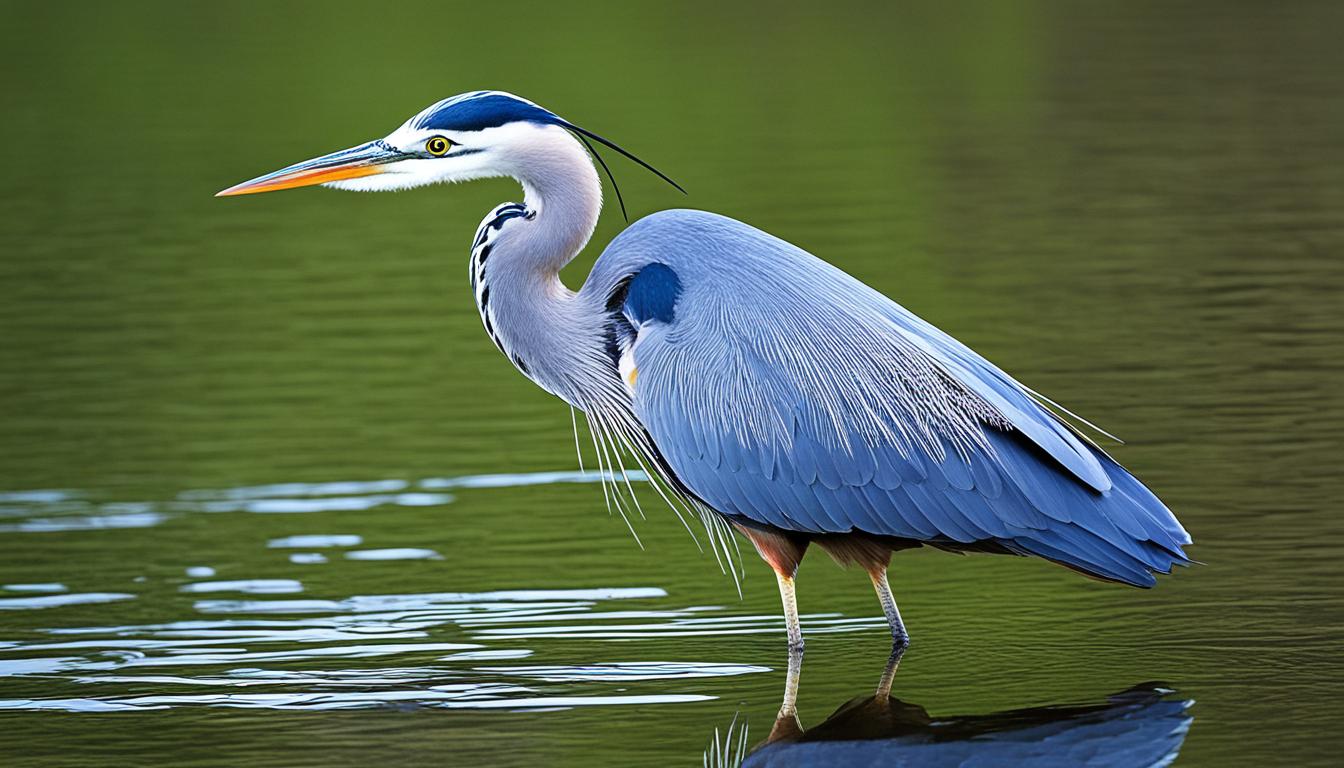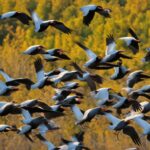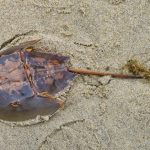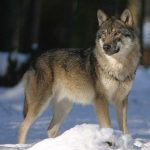Ever thought about how bird watchers tell different heron species apart in America? These birds are often seen in watery areas and along the coasts.
To start, herons are all part of the same family called Ardeidae. This includes birds like the American Bittern, Black-crowned Night Heron, and the Great Blue Heron. There are about 1,000 bird species in North America. The wide variety of herons show us interesting things about how birds live and adapt.
Important tools and resources exist to help people identify herons. Groups like the American Ornithology Society, eBird, and the National Audubon Society offer guides. These can help you know what to look for in size, color, and where the herons live. Knowing these details is key to telling different kinds of herons apart.
So, how can you learn to recognize all the herons in the U.S.? By using guides and tips meant for heron identification, you can get really good at spotting them in nature. With practice, you’ll find these great birds all around you.
The Fascinating World of Herons in America
In the United States, you can find many different heron species. They are very unique. This special heron diversity in America comes from our many types of places, like coasts and big wetlands.
“Understanding the intricate ecosystems where herons thrive is crucial for their conservation and study,” notes the Cornell Lab, highlighting the significance of comprehensive research on these elegant birds.
There are many species of herons here. You might know the Great Blue Heron and the Green Heron. They are each special and add to the mix of heron features and colors.
For bird lovers and experts, knowing how to identify American herons is key. The American Bird Conservancy and U.S. bird areas share great tips. With these, you can tell the herons apart and help with saving them.
We are doing more to protect and understand American herons. More study is giving us hints about where they live and what they do. Groups working to save them and bird scientists are doing important work.
Common Characteristics of Herons
Understanding heron characteristics is key for heron spotting in the USA. These birds have special traits and actions. This makes watching them interesting and helps with telling them apart.
Physical Traits
Herons are known for their long legs and necks, great for walking in water. Their sizes and colors differ, helping us recognize them. The Snowy Egret is white and the Great Blue Heron is blue-gray. Each type has its own unique feather patterns. These help in spotting them.
Behaviors
Heron behaviors vary a lot. For example, the Snowy Egret is active, while the Black-crowned Night Heron is more chill. They use different ways to catch food. Some wait quietly, and others make sudden moves. Knowing how they act can make finding and identifying them easier.
Habitats
Where herons live is also important to know. Most herons are near water, like in wetlands. But, there’s the Cattle Egret that likes open fields with farm animals. Different homes tell us about herons and how they adapt.
The table shows some heron species and their homes:
| Heron Species | Typical Habitat | Notable Traits |
|---|---|---|
| Snowy Egret | Shallow Waters | Active Hunting Techniques |
| Great Blue Heron | Wetlands and Coastal Areas | Bluish-Gray Plumage |
| Black-crowned Night Heron | Dense Trees near Water | Nocturnal Habits |
| Cattle Egret | Fields and Meadows | Adaptable to Non-Aquatic Areas |
Knowing herons’ traits and homes makes spotting them more enjoyable. It lets us see how diverse and fascinating these birds are.
Great Blue Heron: Identification Tips
The Great Blue Heron is easy to spot in North America. When you understand how to spot different herons in the USA, your bird-watching gets better. The Great Blue Heron has unique traits that help in this.
Size and Coloration
It’s one of the biggest wading birds in North America, towering from 38 to 54 inches tall. Its bluish-gray feathers make it noticeable in many places. And in the Florida Keys, you might see an all-white version, showing how diverse they are.
Behavioral Traits
The Great Blue Heron has special behaviors. It stands still by water, waiting for fish. Or it walks slowly, hunting in swamps. These herons can catch prey in both freshwater and saltwater. Knowing these behaviors helps in identifying them. Watching how they hunt can teach you a lot about identifying these birds.
Spotting the Little Blue Heron
The Little Blue Heron is a unique type of heron in the United States. You can easily spot them by their blue feathers and two-toned bill. What’s interesting is that their babies start white but change to blue as they grow.

They mainly live near the eastern and Gulf coastlines and the Southeast’s wetlands. You can tell they are not the Great Blue Heron because they are smaller. Their color change in the first year also makes them different from other herons.
Knowing how to spot a Little Blue Heron can make your birdwatching experience better. It helps you see and understand the unique changes in these birds. With these tips, you can easily pick out a Little Blue Heron from the rest.
Recognizing the Great Egret
Spotting a Great Egret is easy when you know what to look for. They have elegant, white feathers, shiny black legs, and a long, slender yellow bill. Slightly smaller than the Great Blue Heron, they stand out during breeding season. This is when they grow remarkable feathery plumes. They also have a special way of attracting mates. By spreading their tail feathers and bobbing, they put on a show.
You can often find them in various wetlands across the country. This shows they can live in many different places. This is a sign of how well they adapt to different environments.
Physical Characteristics
The Great Egret is known for its striking physical features. Look for the bird’s pure white plumage, shiny black legs, and long, slender yellow bill. It is slightly shorter than the Great Blue Heron. This makes it stand out in the heron family.
During breeding, you’ll notice their feathery plumes. They use these to attract mates. It makes them easier to spot during this season.
Behavior and Habitat
The Great Egret has some interesting mating behaviors. Males spread their tail feathers and bob. This is their way of showing off and finding a mate. They are quite adaptable, living in various wetlands in the U.S.
Their adaptability shines, showing how different herons can be found across America. Knowing how to identify them is key for bird watchers. This way, they can admire these elegant birds in their natural homes.
Identifying the Snowy Egret
The Snowy Egret is a unique find when heron spotting in the USA. It’s easily recognized by its small size and bright yellow feet. These birds elegantly wade through water, looking for their next meal. They’re often seen in their natural habitats. Unlike the bigger Great Egret, Snowy Egrets have a thin black bill and yellow spots near their base. This makes them stand out against other herons in the country.
In the past, people valued Snowy Egrets for their beautiful feathers. As a result, they faced threats to their survival. Yet, with the help of strong conservation efforts, their numbers have increased. Still, these birds live mostly near the coast but also travel inland and north to breed. Tools like eBird provide detailed information on their movements. This makes heron spotting in the USA all the more interesting, especially tracking where they go during different times of the year.
Here’s an easy guide to telling Snowy Egrets apart from similar birds:
| Feature | Snowy Egret | Great Egret |
|---|---|---|
| Size | 24-27 inches | 38-41 inches |
| Bill Color | Black | Yellow |
| Feet Color | Yellow | Black |
| Habitat | Coastal and inland wetlands | Lakes, rivers, marshes |
| Conservation Status | Low Concern | Least Concern |
The unique features and habits of the Snowy Egret draw in bird fans. It’s a key player in the world of herons in the United States.
Green Heron: A Guide to Identification
Spotting the Green Heron can be tricky. It uses its surroundings well, blending in despite its bright colors.
Camouflage Techniques
The Green Heron camouflages easily. It tucks its neck in, looking like a small shape hidden in the grass. Patience is key when trying to catch a glimpse, especially since it extends its neck to catch its food.
Unusual Behaviors
This heron is smart and shows behaviors that are unique. It uses tools, like making bait from bugs or bread to fish. These smart actions show how important close observation is for recognizing this clever bird.
Spotting the Black-Crowned Night Heron
In the USA, spotting the Black-crowned Night Heron can be challenging yet delightful. This bird is known for its dark feathers and white crest plume, making it stand out. It usually appears at dusk and night, making it hard to see during the day when it rests in dense trees near water.
It’s easier to notice this heron’s juvenile form. It has white and brown streaks, which look nothing like the adult. This distinct look helps you find them across the U.S. Their night hunting adds a mystery, so it’s important to know when to look to see these birds in action.
The Black-crowned Night Heron can be found across most of the U.S. Knowing about its habits and where it likes to be can improve your chances of seeing it. By watching them around sunset, you’ll learn to identify different heron types. This lets you appreciate the many kinds of herons in the USA more fully.
FAQ
How do you identify different types of herons in the USA?
To tell various heron species apart in the USA, focus on size, color, how they act, and where they live. Examples include the Great Blue Heron, Little Blue Heron, and Great Egret. Check out the American Ornithology Society, eBird, and National Audubon Society. They’ll help you get better at seeing these birds.
What are some heron identification tips for beginners?
Start by looking at a heron’s size, the colors on their feathers, beak shape, and how they catch their food. Begin with the more common ones like the Great Blue Heron and Snowy Egret in your area. Using field guides and birding apps can make spotting herons easier.
How many types of herons are there in the United States?
There are many heron types in the United States. You might see the Great Blue Heron, Green Heron, Black-crowned Night Heron, and Little Blue Heron. With subspecies and migratory habits, there are over a dozen heron species living in different parts of the country.
What are the common characteristics of herons?
Herons typically have long legs and necks for wading and hunting in the water. They come in various colors and sizes. Some are active hunters while others prefer to stay still.
How big is the Great Blue Heron?
The Great Blue Heron stands out as one of the largest wading birds in North America. It reaches a height from 38 to 54 inches tall. You can identify it by its bluish-gray feathers and its big size. There’s even an all-white form found in the Florida Keys.
Where can you find Little Blue Herons in the USA?
Little Blue Herons mostly live along the east and Gulf coasts and in the Southeast’s wetlands. They fly as far as Mississippi during breeding season. Young ones are white and grow into a blue color, which helps when identifying their age.
How can you recognize a Great Egret?
You can tell a Great Egret by its beautiful white feathers, dark shiny legs, and a long thin yellow bill. In breeding time, they also get feathery plumes. They’re common in U.S. wetlands.
What makes the Snowy Egret unique?
The Snowy Egret stands out because it’s smaller and has bright yellow feet. It hunts in shallow water, and its once-valuable plumes were sought for in the past. Now, they are seen more due to successful conservation efforts.
What are some identification tips for the Green Heron?
The Green Heron is good at hiding with its camouflage. It tucks its neck in, only stretching it out when hunting. They’re also known for using tools to catch food, showing how smart they are.
How can you spot a Black-crowned Night Heron?
Spot a Black-crowned Night Heron by its stocky build, darker gray feathers, and white head plume. They are active around dusk and hide well during the day, usually in trees near water. Young ones are white and brown spotted.







